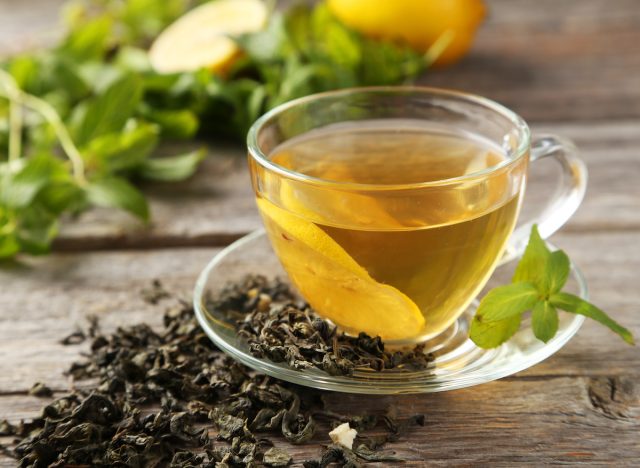Tea boasts plenty of benefits that help nourish the body. Being the second most consumed beverage in the world next to water, this comforting drink comes in many different types to choose from. Hot or iced, tea is the perfect drink to soothe your soul, help you when you’re sick, detox the body, and just enjoy all together.
Green tea, specifically, is a true tea that comes from the leaves of the camellia sinensis plant. Boasting as one of the most popular teas, green tea comes with an ample amount of benefits. Now, thanks to new findings, green tea is being linked to potentially boosting your immune system and increasing your body’s resistance to illnesses.
The discovery was presented at the 2022 Tea Symposium by Dayong Wu, MD, PhD, Associate Director of the Nutritional Immunology Laboratory at the USDA Human Nutrition Research Center on Aging, and Associate Director for the Friedman School of Nutrition Science and Policy at Tufts University.
“Tea should be a key component of a healthful food pattern as it may help boost your immune system and increase your body’s resistance to illnesses, among several other health benefits,” says Wu.
In his presentation, Wu outlined the health benefits of green tea consumption, which are mainly attributed to green tea catechins (GTCs)—an antioxidant. In particular, the epigallocatechin-3-gallate (EGCG) is the most abundant and biologically active catechin.
Because of this, green tea helps your body ward off infection. So, in the event you do become sick, the tea will help your body respond to illness in a more efficient way. It does this by ridding itself of the infection.
Wu continues to discuss how consuming tea regularly may also help prevent certain diseases. Tea could also reduce its severity when those certain diseases happen.
Green tea and its catechins have been shown to help you fight against a variety of pathogens– any organism that can produce disease–by decreasing the pathogen’s ability to infect you and helping your immune system spring into action.
According to Wu, green tea is also great for preventing and reducing T cell-mediated autoimmune diseases. Some include multiple sclerosis, rheumatoid arthritis, inflammatory bowel disease, and Sjogren’s syndrome.
READ RELATED: The #1 Sign Your Blood Sugar is "Out of Control"
Furthermore, GTCs have been shown to improve autoimmune disorders by promoting self-tolerance, suppressing autoantigen-induced inflammatory attacks, and enhancing tissue repair.


Toby Amidor, MS, RD, CDN, FAND award-winning nutrition expert and Wall Street Journal best-selling author of Diabetes Create Your Plate Meal Prep Cookbook, and member of our Medical Expert Board, also agrees that green tea comes with positive body benefits.
“Tea, especially green tea, contains polyphenols. These powerful antioxidants have been shown to help fight disease,” says Amidor.
Amidor continues to state that there is also some evidence that vitamin C can help with immunity.
“Green tea specifically also provides vitamins C and E, both antioxidants that help fight free radicals in your body,” she says.
The body can achieve GCT benefits in several ways. First, through direct antiviral effect. This includes slowing down the absorption of the virus, penetration, membrane fusion, and replication in the upper respiratory tract. Second, through an immune-enhancing effect to help clear the virus. Lastly, anti-inflammatory and anti-oxidative effects help reduce tissue damage.
“As a tasty, inexpensive beverage, tea consumption may bring certain benefits in a broad array of metabolic and immune health aspects,” he says.
However, Amidor also notes that drinking tea when you’re sick won’t make your illness disappear.
“The nutrients found in tea can help your body in various ways do its job, but it will still take time for your body to fight the illness,” she says. “It should also be noted that you don’t want to drink too much green or black tea with caffeine. The 2020-2025 Dietary Guidelines recommend no more than 400 milligrams of caffeine per day—so be mindful of portions.”
Kayla Garritano
Source:








